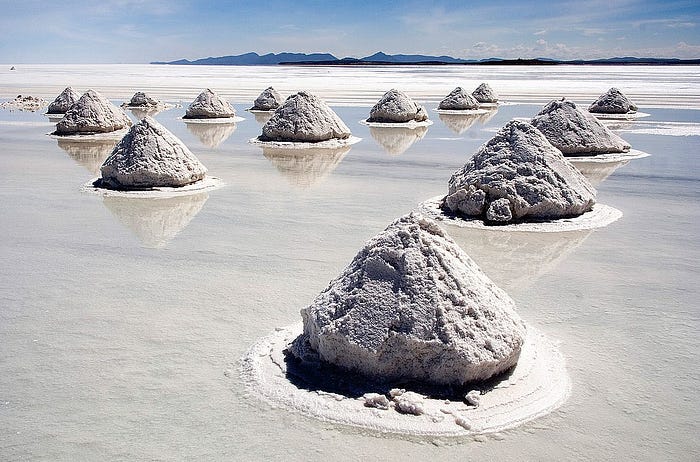Among the steps being taken toward creating a more sustainable future is the transition away from the internal combustion engine to electric vehicles, which for the moment is critically dependent on lithium. As a mainstay of modern batteries, though not necessarily those of the future, the role of lithium and its procurement has become a subject of intense innovation, discussion and controversy, ranging from those who argue it is toxic — mistakenly — and mined under highly exploitative conditions, to those who, better informed, understand that by its very nature, it provides a better working base than fossil fuels.
An analysis of this complex narrative should begin by pointing out that whatever the doomsayers claim, the planet has far more lithium than we need and can be extracted reasonably cheaply, using techniques that range from mining — an activity we have carried out since the dawn of time, the electrification of which aims to make it increasingly sustainable — to cheaper methods with less environmental impact such as direct extraction from salt mines, brine and groundwater. This innovative method could revolutionize the industry and align mining practices with environmental values, combining the need for resources with a commitment to sustainability.
Lithium is therefore a reasonably abundant element, albeit one that is not directly accessible. If we are to expand extraction, we must use it responsibly. It is not just a matter of finding more lithium, as is happening: it is also a matter of optimizing its use, a perspective that introduces a crucial element of efficiency and sustainability. That said, lithium can be recycled to make new batteries: the fact that this was not done with cell phones because their low content made it uneconomical, does not mean that it is not being done with larger batteries such as those for electric vehicles. It is important to understand that, however we look at it, manufacturing electric car batteries requires far fewer raw materials and releases far fewer pollutants than operating diesel and petrol vehicles do.
At the same time, lithium prices have been falling recently, reflecting greater abundance than expected, and resulting in increasingly affordable battery prices and, therefore, EVs. In addition to there being more lithium than we thought, a significant amount is found in deposits that allow relatively simple and unaggressive exploitation using innovative technologies.
The fact that some 85% of the planet's lithium is found in an area between Argentina, Bolivia, Chile and Peru), raises geopolitical and socio-economic ramifications, adding a human dimension to the story, intertwined with the complexities of resource extraction in sensitive regions. Similarly, recent discoveries such as the estimated 5.9 million tons in the Jammu and Kashmir areas of India are likely to add new players in the global race for battery and electric vehicle manufacturing supremacy. India, which is now boasting that it has achieved self-sufficiency, adds a layer of national ambition and international competition to the lithium narrative, showing how countries are trying to position themselves for this new technological era.
The picture, then, is complex and multifaceted, as with all major technological transitions. It is a story of balance: abundance with efficiency, economic viability with socio-political responsibility, national interests with global cooperation, and traditional methods of extraction with innovative and sustainable technologies.
That narrative is not just about lithium: it's about how we approach our resources in the age of electrification. It's about understanding that the path to a sustainable future is as much about how we extract and use resources as it is about the end products we create with them. The lithium maze symbolizes a broader transition to a more sustainable world, marked by innovation, responsibility and an evolving understanding of what it really means to power our future sustainably. And how important it is that we are able to do so.
(En español, aquí)


